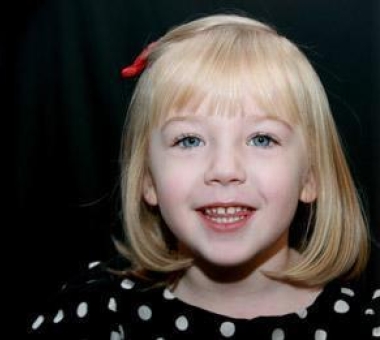Stories of Hope & Recovery

Claire Kurz
Born With Congenital Heart Conditions And A Fighting Spirit
The Kurz family never gave up hope for their baby girl and brought her home at six days old to meet her big sister Madeline. For the next five weeks, they tried to maintain a sense of normalcy while they waited to get the call from a surgeon who might be able to save Claire’s life. Finally, Dr. Richard Jonas, chief of Cardiac Surgery at Children’s National Medical Center in Washington, DC, performed open-heart surgery to fix Claire’s life-threatening Transposition of the great arteries (TGA). Dr. Jonas performed a modified “Rastelli” procedure, explicitly crafted to fix Claire’s heart defects, and closed her VSD (Ventricular Septal Defect) using a donated piece of the pulmonary artery called a conduit.
Always a fighter, Claire came out of surgery beautifully, and for the next year, she thrived as a happy and healthy baby. Still, the battle was not over for Claire. At 13 months old, she came down with the respiratory syncytial virus (RSV), a virus that can become serious in babies and young children, especially babies like Claire, who are already considered high-risk. For 10 days, Claire stayed in the hospital’s pediatric intensive care unit fighting congestive heart failure caused by the RSV (Respiratory Syncytial Virus).
While Claire fought through possible heart failure, doctors discovered that the original conduit to repair her VSD was narrowing, meaning she would need another procedure to fix her heart. The original conduit had narrowed from 12 millimeters to just 3 millimeters, which explained why, before her illness, Claire’s coloring had been a little blue, and she had trouble growing. Her body was not getting a sufficient supply of oxygen. Dr. Joshua Kanter, a pediatric cardiologist at Children’s National Medical Center, inserted a stent to reopen the conduit. Once again, Claire recovered from the procedure beautifully.
Before Claire received her stent, she did not have the stamina to walk or play for extended periods of time. The intervention will give her a couple of years before she needs another surgery—giving her time important to grow and, most importantly, time with her loving family.
Today, at 3 years old, Claire is a healthy and active toddler who runs around and plays with her older sister, enjoying every second. The Kurzes are incredibly thankful for the team of medical professionals, especially Drs. Jonas and Kanter helped save their baby girl. They are committed to spreading awareness about the prevalence of congenital heart defects.
“While we hope no child or parent has to go through this, we want to make sure parents have the best information out there about congenital heart defects and treatment,” said Josie. “Claire’s interventions saved her life, and we hope by spreading our message we can help increase funding for research into what treatments and interventions are most effective to help these children.”
The Kurzes are active in the local Richmond, VA, chapter of Mended Little Hearts, a network for parents of children with heart defects and heart disease. They also serve as a resource and support team for other families. “We want parents to know someone else has been through this, and they will get through it too.”
Claire will have to undergo additional procedures as her heart grows and changes, but today the Kurz family is happy and healthy, embracing and counting all of life’s blessings.
If your child is born with a heart defect or acquires a heart problem during childhood, you will no doubt have many questions. As you seek answers—on this website, from your doctor, from other parents, and from other sources—keep in mind that new therapies and technologies sized especially for children continue to improve the outcomes for children born with congenital heart defects or who acquire a heart condition as they are growing up. Some 90% of children born with a heart defect survive to adulthood. SecondsCount features in-depth information on Children and Heart Disease and Adults with Congenital Heart Disease.